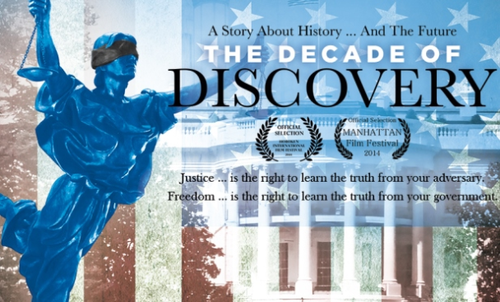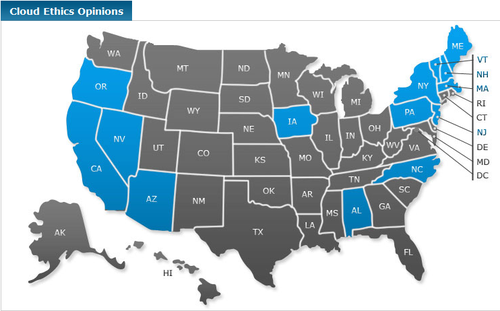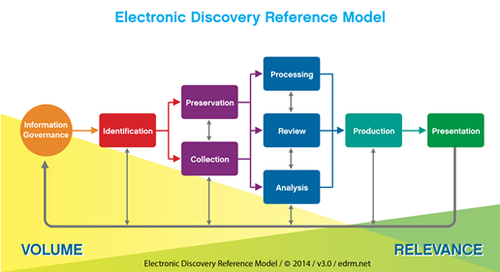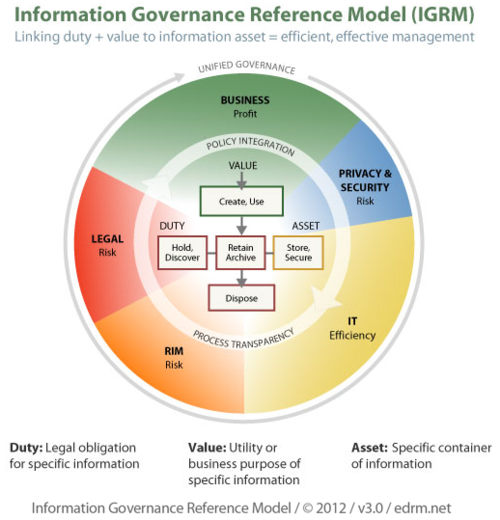eDiscovery at the Movies – eDiscovery Trends

While we don’t have Siskel & Ebert around to review movies anymore, there is a new documentary that will certainly merit review by many eDiscovery professionals out there.
The Decade of Discovery was written and directed by Joe Looby, who, according to his LinkedIn profile, served in the U.S. Navy's Judge Advocate General Corps, practiced as an environmental enforcement attorney for New York state and was a founder of the forensic technology practices at Deloitte and FTI. His film production company is called 10th Mountain Films, named in honor of his father, who served in the 10th Mountain Division, a U.S. Army ski patrol that fought in World War II.
As noted in Law Technology News (E-Discovery Hits the Silver Screen, written by Monica Bay), Looby’s 61-minute film has already premiered last Saturday in Middletown, N.Y., at the Hoboken International Film Festival and is also set to be shown at the Manhattan Film Festival on June 21.
Described as a “documentary about a government attorney on a quest to find a better way to search White House e-mail, and a teacher who takes a stand for civil justice on the electronic frontier”, Looby notes in a radio interview with the Mid Hudson News that the documentary includes comments by “a government attorney, a teacher, seven judges and two professors”, which includes several well-known names in eDiscovery: U.S. District Judge Shira Scheindlin, of the Southern District of New York, Jason R. Baron, former director of litigation for the U.S. National Archives and Records Administration and now of counsel at Drinker Biddle & Reath, and Richard Braman, founder and executive director emeritus of The Sedona Conference, among others. Looby refers to those who have advanced tremendous progress made over the past decade in eDiscovery practice as “true American heroes”.
Consider this:
- When the President of the United States leaves office, White House emails generated during that president’s term cannot be released to the general public (via the US National Archives) until they are reviewed and declassified,
- When Bill Clinton left office in 2001, there were 32 million emails to be reviewed and declassified,
- That number rose to over 200 million emails when George W. Bush left office in 2009,
- And is expected to rise to over 1 billion emails once Barack Obama leaves office at the end of his term.
The movie addresses the considerable advancements to address problems like this in both the government and litigation arenas.
Here is a link to the trailer for the movie – it looks very interesting and informative. Hopefully, the movie will eventually be shown or available via a nationwide outlet (Netflix, anyone?) for those of us not in the Manhattan area.
So, what do you think? Is this a movie you would like to see? Please share any comments you might have or if you’d like to know more about a particular topic.
Disclaimer: The views represented herein are exclusively the views of the author, and do not necessarily represent the views held by CloudNine Discovery. eDiscoveryDaily is made available by CloudNine Discovery solely for educational purposes to provide general information about general eDiscovery principles and not to provide specific legal advice applicable to any particular circumstance. eDiscoveryDaily should not be used as a substitute for competent legal advice from a lawyer you have retained and who has agreed to represent you.










